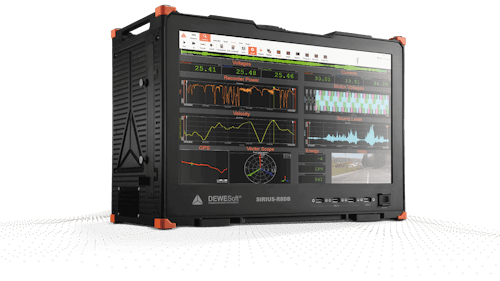
Análisis de la energía eléctrica
Medición y análisis de potencia eléctrica de alta precisión [AC⚡DC]
Los analizadores de calidad de la energía de Dewesoft combinan la medición de potencia, energía, osciloscopio y FFT en una sola unidad portátil. Las entradas de alta tensión CA/CC CAT II miden hasta ±1200 V con una precisión del 0,03 %. Todos los sensores de corriente son compatibles y pueden ser escalados y corregidos en fase a través de la base de datos de sensores incorporada. Los motores DAQ ofrecen una frecuencia de muestreo de hasta 15 MHz y pueden manejar las aplicaciones de medición de corriente más exigentes. Los analizadores Dewesoft miden los parámetros de calidad de la energía según la norma IEC 61000-4-30 clase A. Se pueden medir varias fases simultáneamente. Las pantallas vívidas y configurables por el usuario, que incluyen vectorscopios, osciloscopios, FFT y medidores, le permiten ver y analizar sus datos como nunca antes.
Buscar productos

Medición y análisis de potencia eléctrica de alta precisión [AC⚡DC]
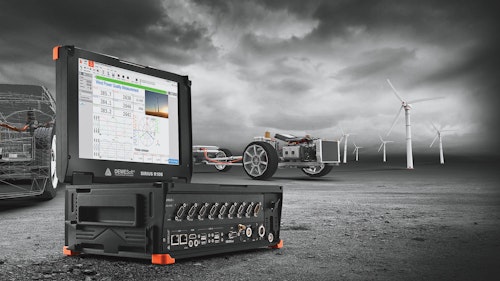
Medición y análisis de alta precisión de la calidad de la energía
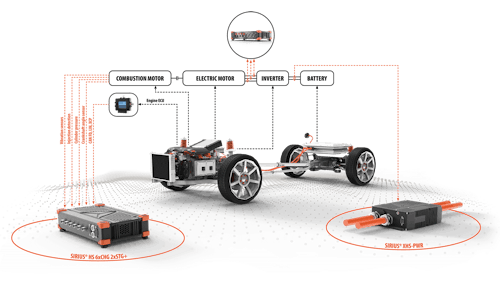
Soluciones completas de ensayo para vehículos eléctricos e híbridos
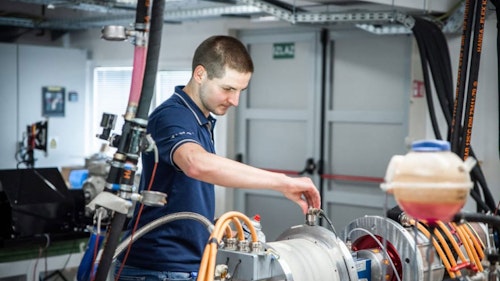
Solución completa para las pruebas de transmisiones eléctricas e híbridas
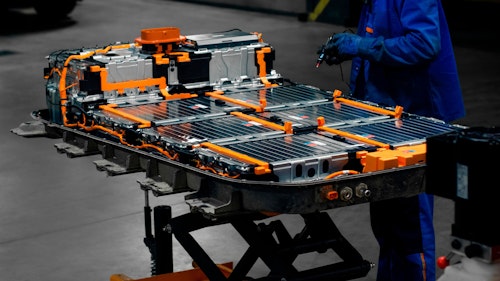
Medición de alta precisión y análisis de datos
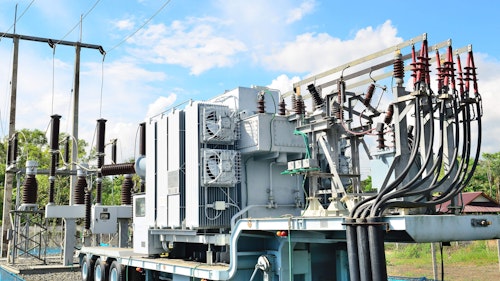
Soluciones de ensayo para transformadores de potencia

Pruebas de potencia eléctrica y calidad de la energía en aerogeneradores
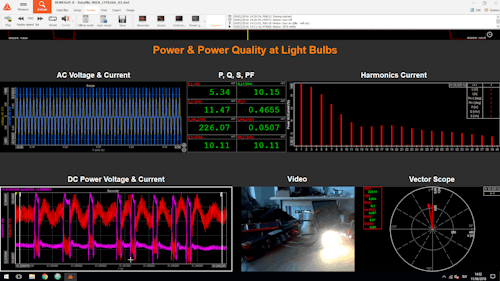
Solución completa de análisis de potencia y pruebas de calidad de la energía

Pruebas de energía eólica, solar y geotérmica
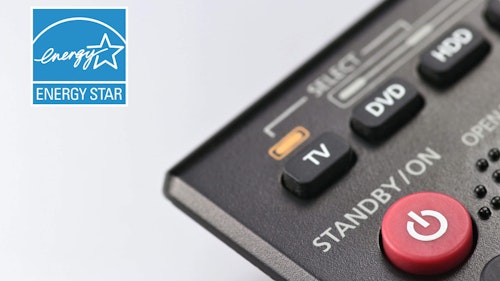
Pruebas de consumo de energía en dispositivos electrónicos
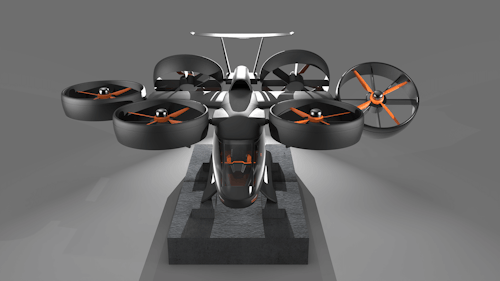
Soluciones para ensayos estructurales, eléctricos, de NVH y de vuelo

Instrumentación para pruebas completas de motores a reacción

Un voltímetro vectorial para redes eléctricas y electricistas
Electrical power is the rate at which electrical energy is transferred by an electric circuit. It is typically measured in watts (W), where one watt is equal to one joule of energy transferred per second. Electrical power can be calculated using the formula:
Power (P) = Voltage (V) * Current (I)
where:
Voltage (V) is the potential difference between two points in the circuit, measured in volts.
Current (I) is the flow of electric charge through the circuit, measured in amperes (amps).
Power quality refers to the characteristics of the electrical power supplied to a system that affect its performance. Good power quality ensures that electrical systems operate efficiently, reliably, and safely. Poor power quality can lead to equipment malfunction, reduced lifespan, and energy inefficiency. Key aspects of power quality measurement include Voltage Stability, Frequency Stability, Harmonics, Transient Surges, Voltage Sags and Swells, Interruptions, and Power Factor.
A power analyzer is an instrument used to measure and evaluate the electrical power characteristics of a system. It provides detailed insights into various aspects of power quality, energy consumption, and electrical performance. Power analyzers are essential tools for diagnosing, troubleshooting, and optimizing electrical systems. They are used in a wide range of applications, including industrial facilities, commercial buildings, utilities, and research labs.
Key functions and features of a power analyzer include:
Voltage and Current Measurement: Power analyzers measure the voltage and current in electrical circuits, providing accurate readings for both AC (alternating current) and DC (direct current) systems. Dewesoft power analyzer can measure direct voltage up to ±2000 V!
Power Measurement: They calculate real power (watts), apparent power (volt-amperes), and reactive power (volt-amperes reactive). This helps in understanding the actual power consumption and efficiency of electrical devices.
Power Factor: Power analyzers measure the power factor, which indicates the efficiency of power usage. A low power factor means more reactive power, leading to higher energy costs.
Harmonics Analysis: They detect and analyze harmonic distortions in the electrical system. Harmonics can cause equipment overheating, increased losses, and interference with other devices.
Energy Consumption: Power analyzers track and record energy consumption over time, providing data on kilowatt-hours (kWh) used. This is useful for energy management and cost allocation.
Transient Analysis: They capture and analyze transient events such as voltage spikes, sags, and swells, which can affect the performance and longevity of electrical equipment.
Data Logging and Monitoring: Many power analyzers have data logging capabilities, allowing continuous monitoring of electrical parameters over time. This data can be stored and analyzed to identify trends and issues.
Communication Interfaces: Advanced power analyzers often come with communication interfaces such as USB, Ethernet, or wireless connectivity, enabling remote monitoring and integration with other systems.
Dewesoft power analyzers deliver exceptional measurement accuracy of 0.03% across a wide bandwidth range of up to 5 MHz. This precision is maintained consistently throughout the entire measurement chain—from the current transducer to the final power calculation.
Whether performing end-of-line power tests or highly dynamic measurements on batteries, motors, or inverters, our solutions ensure reliable and accurate results.
Dewesoft power analyzers offer highly flexible configurations—from standard 3-phase to complex multi-phase setups—available in both single-box and distributed architectures.
Our power analyzers can effortlessly expand to include fully synchronized mechanical measurements such as torque, temperature, vibration, strain, and force. Additionally, a wide range of digital interfaces is supported, including CAN, CAN FD, XCP, Ethernet, video, GNSS, and more.
Dewesoft power analyzers enable easy and precise calculation of hundreds of power parameters, including harmonics, FFTs, energy consumption, and electric motor efficiency. Calculations can be performed in real time—even across multiple parallel power modules with different configurations. With NVIDIA CUDA support, processing can be offloaded to the GPU, ensuring smooth and efficient real-time performance. Additionally, all raw data is securely stored, allowing for complete offline recalculations without the need to repeat any tests.
Casos de estudio
Los ingenieros de Bugatti Rimac tenían una misión: establecer un nuevo récord mundial para un EV (vehículo eléctrico) de producción en una de las pistas más desafiantes del mundo: el Nürburgring Nordschleife en Alemania.
Casos de estudio
LOGICDATA mejoró las pruebas de motores eléctricos pequeños con un diseño flexible de banco de pruebas, utilizando el software DewesoftX para un análisis eficiente de los motores. Las características clave incluyeron detección automática de modos de motor, mapeo de eficiencia y termografía para la detección de fallas. Esta configuración redujo el tiempo de prueba, mejoró la precisión de los datos y optimizó el rendimiento del motor, agilizando en última instancia el proceso de desarrollo de LOGICDATA.
Notas de aplicación
Los motores eléctricos se utilizan ampliamente en diversos campos de la ingeniería, desde la industria hasta aplicaciones automotrices, pero plantean desafíos en materia de vibración y ruido. Investigar las vibraciones e identificar frecuencias es vital para optimizar la eficiencia del motor eléctrico.
Casos de estudio
Aprenda cómo Uniper podría hacer una selección informada de los transductores de frecuencia adecuados en función de los resultados de las pruebas realizadas con el equipo Dewesoft.
Notas de aplicación
¡Con la ayuda de un analizador de energía Dewesoft de alta precisión, verificamos si los economizadores de energía eléctrica realmente ahorran un 10% de energía como afirman los fabricantes de economizadores!
Notas de aplicación
Usando Dewesoft Power Analyzer, investigamos la eficiencia y la calidad de la energía de las luces LED de acuerdo con IEC 61000 sobre compatibilidad electromagnética (EMC).
Casos de estudio
Dewesoft configuró la medición de la parte de CC y CA del tren motriz Q2 para medir la eficiencia y la calidad de la conversión de energía del inversor de potencia del motor sin escobillas.
Casos de estudio
Conozca cómo funcionan los DAQs de Dewesoft y la solución de análisis de energía para verificar el funcionamiento de un disyuntor síncrono de alta tensión.